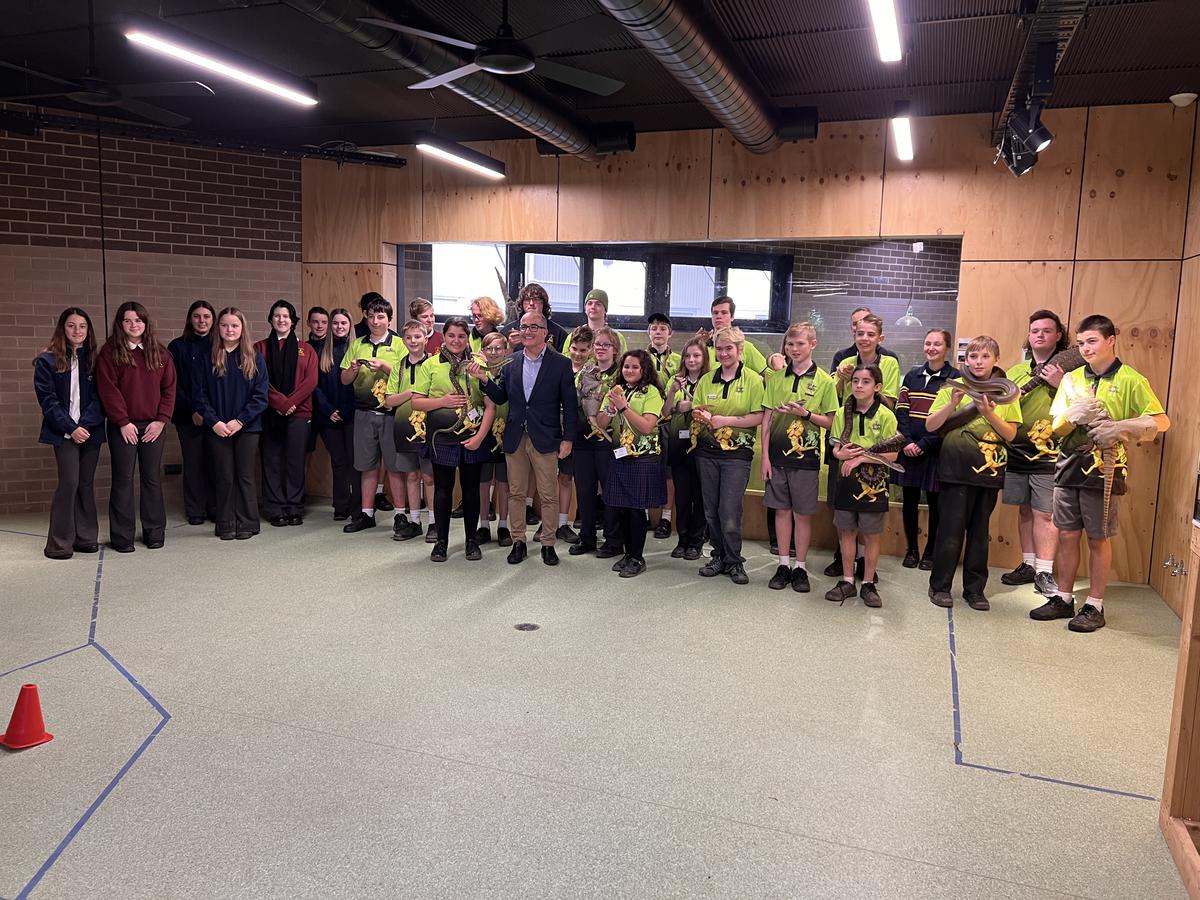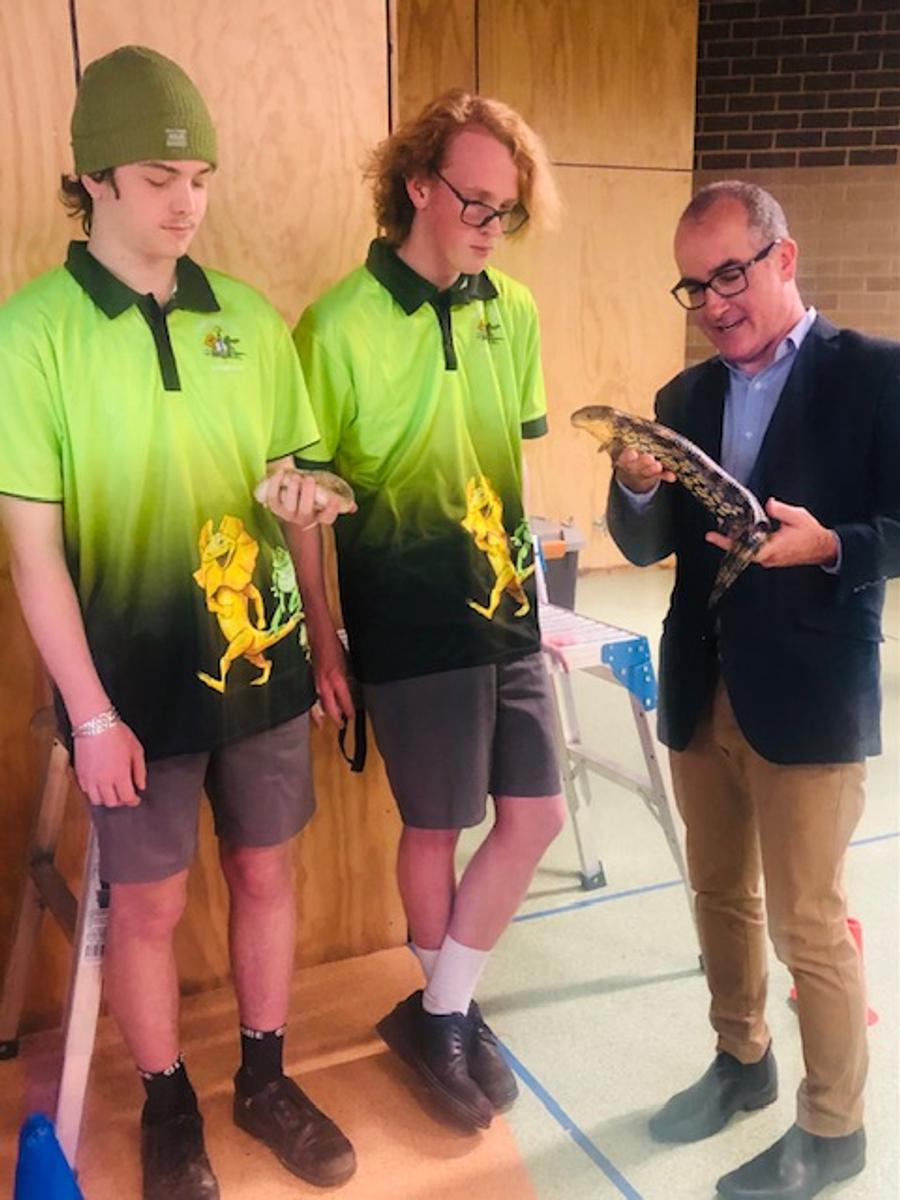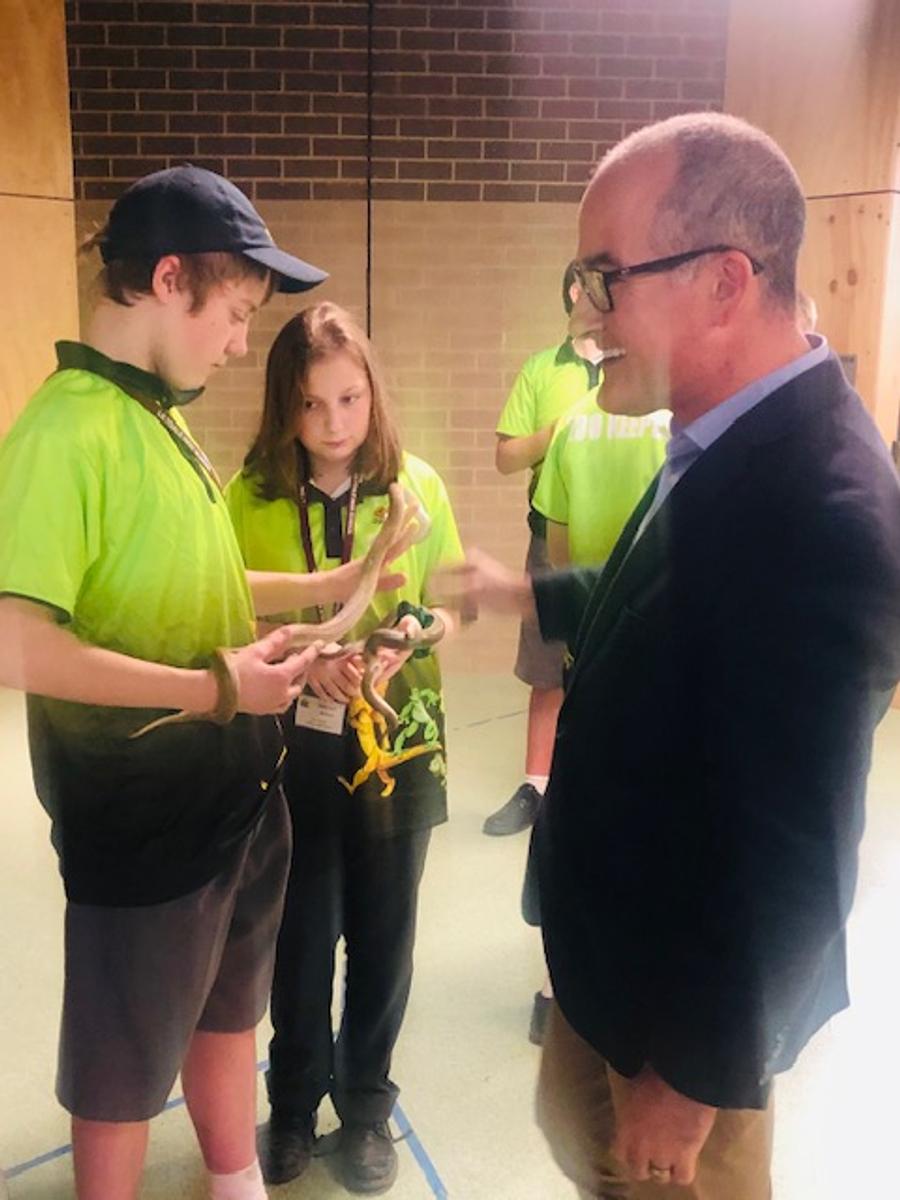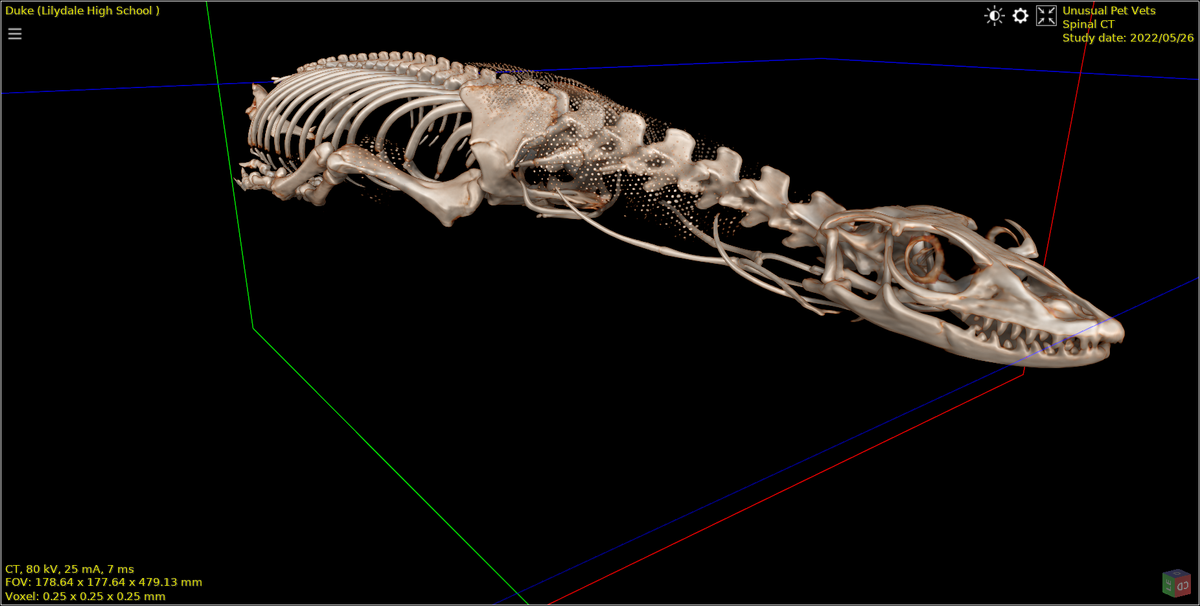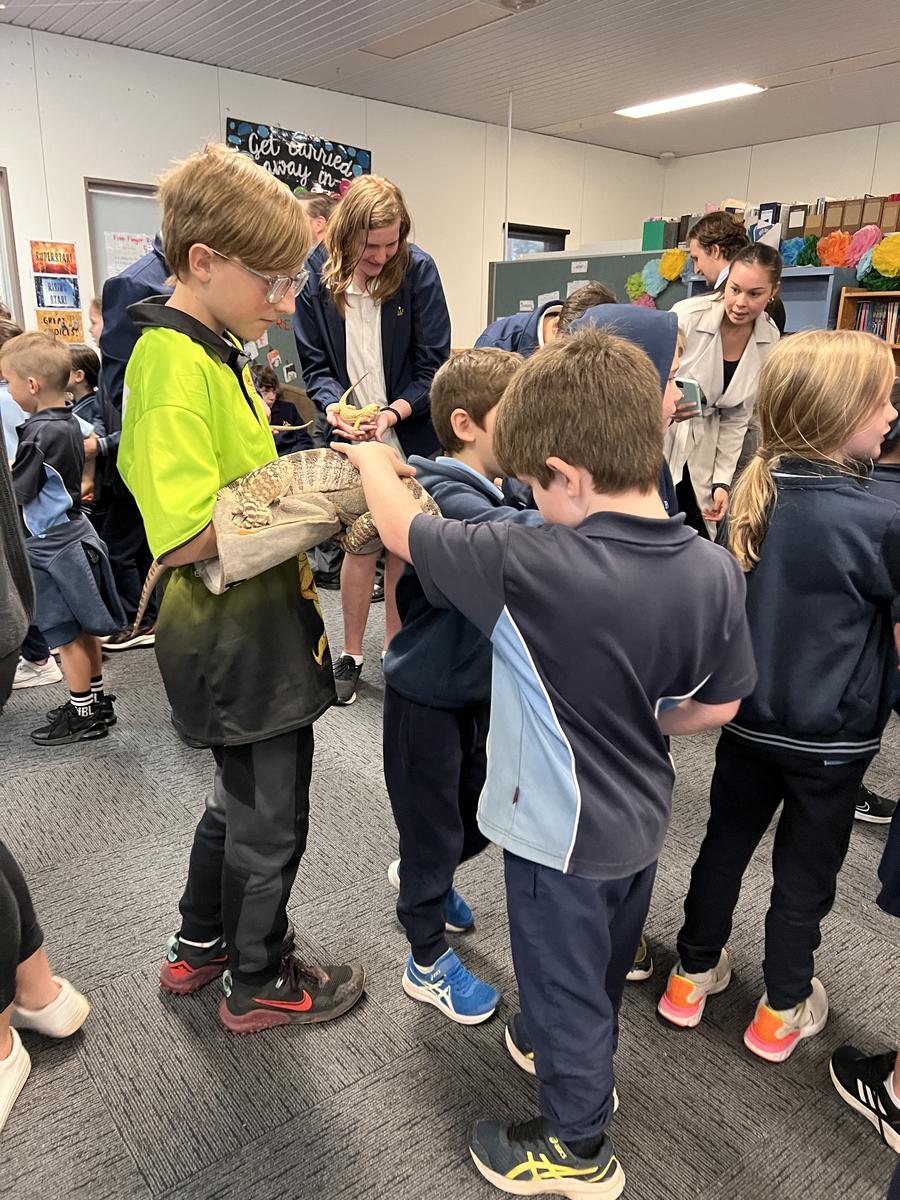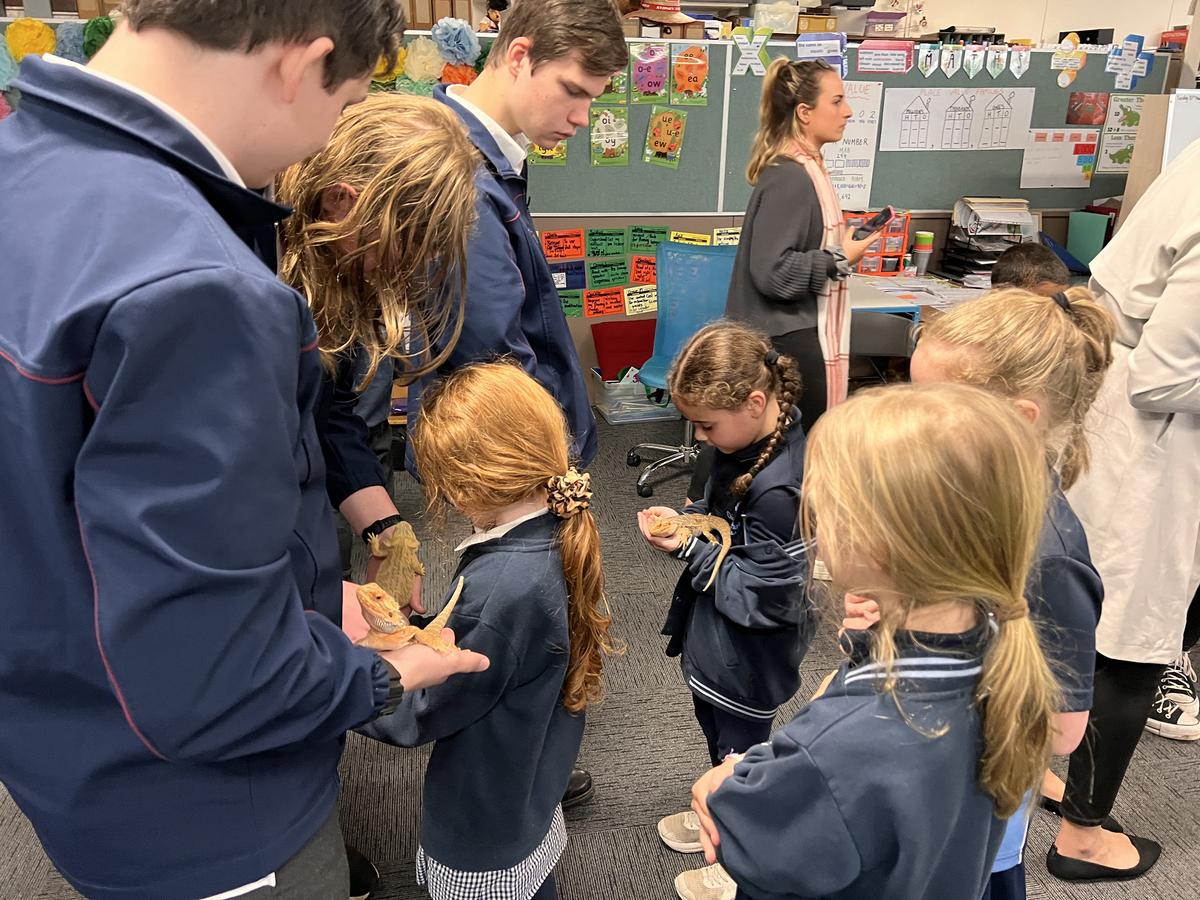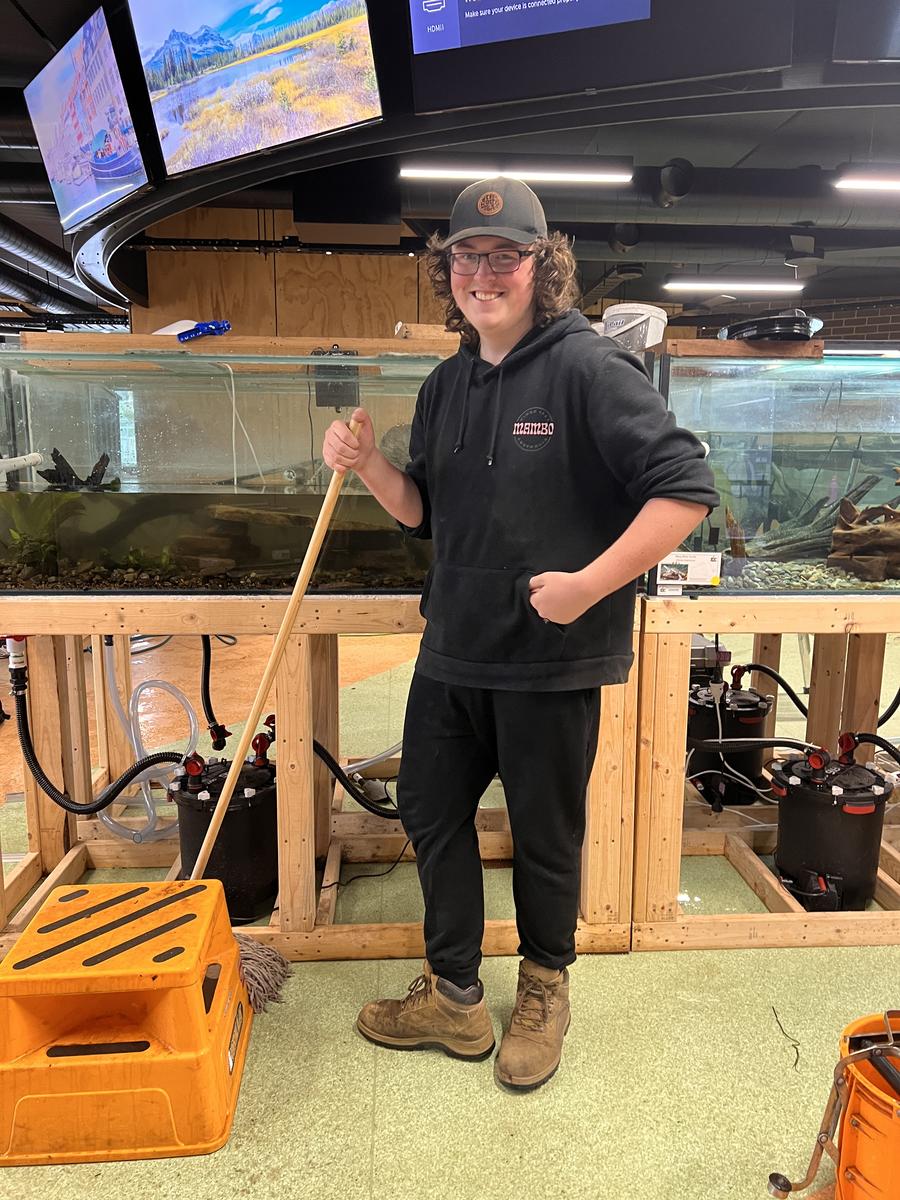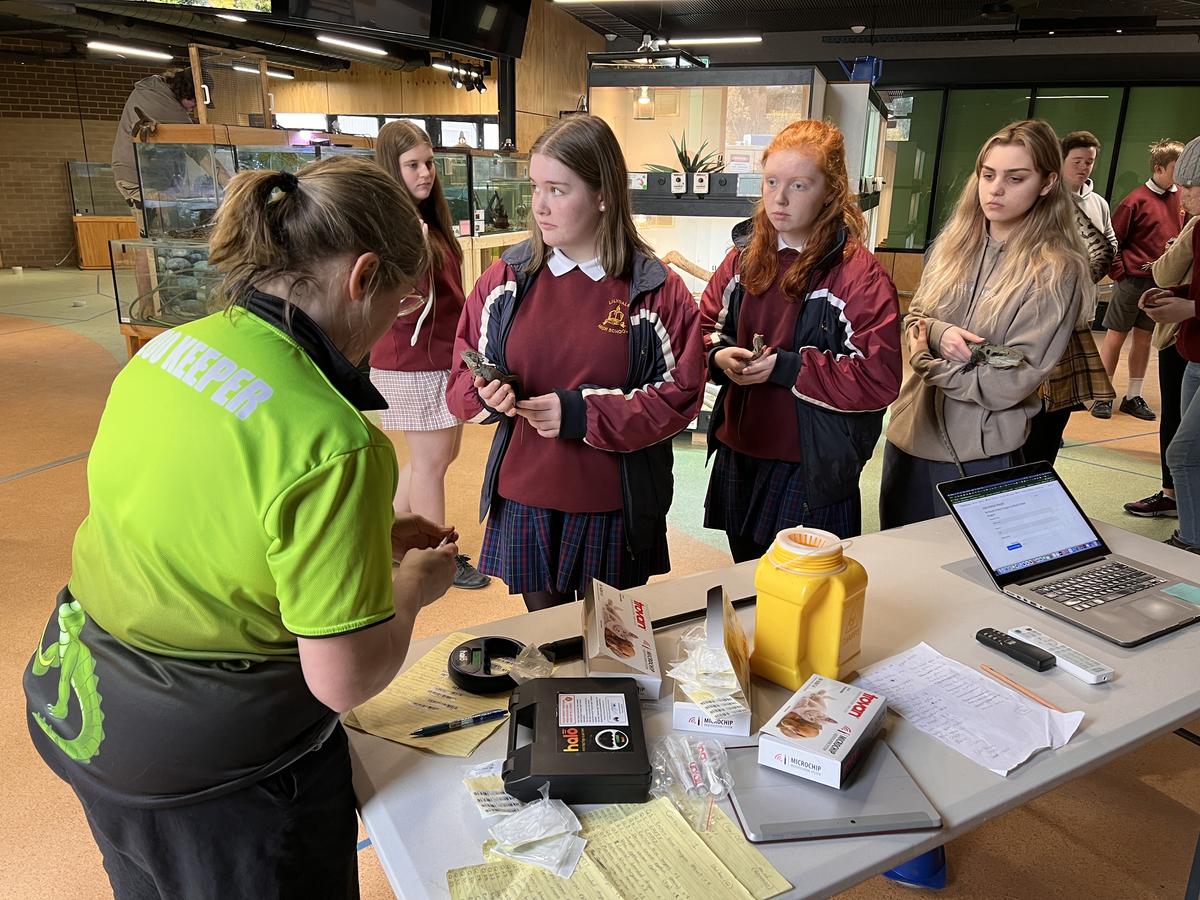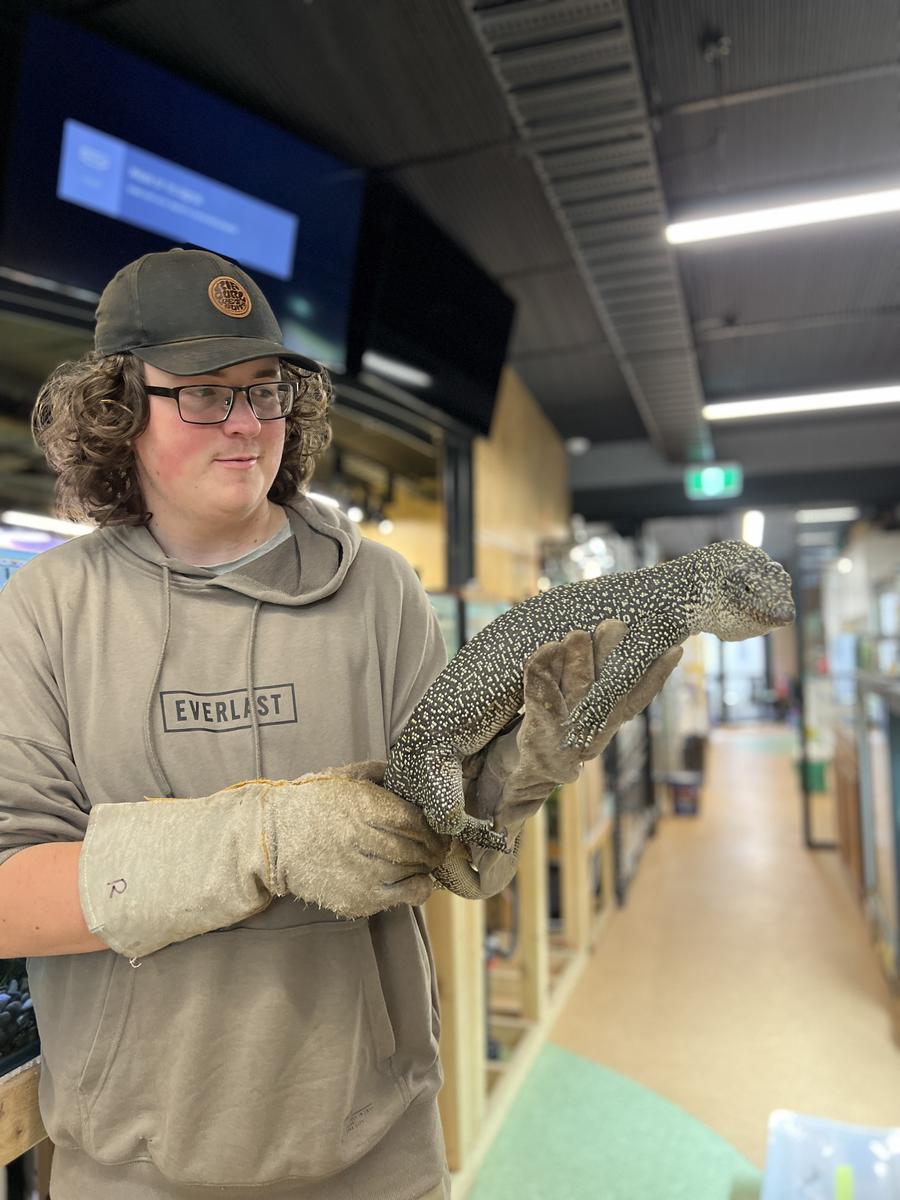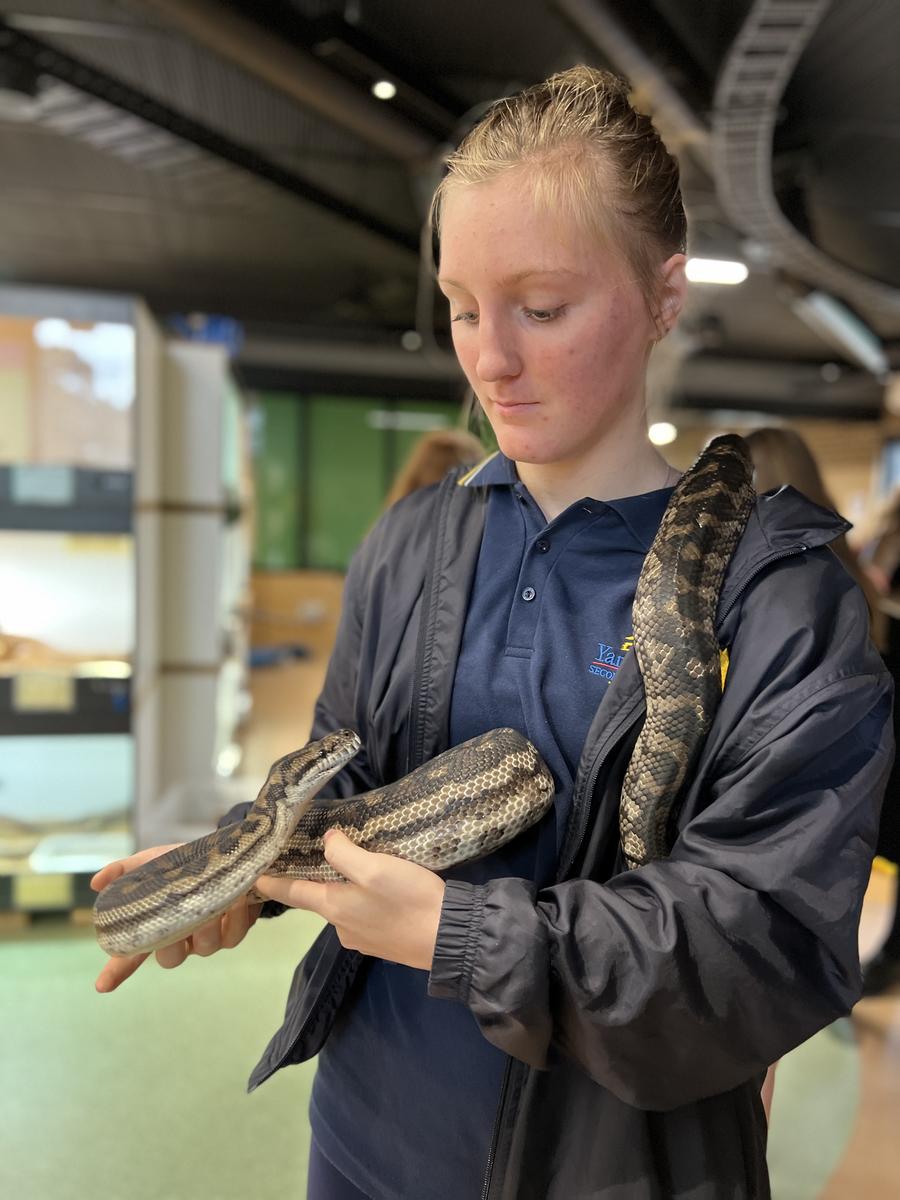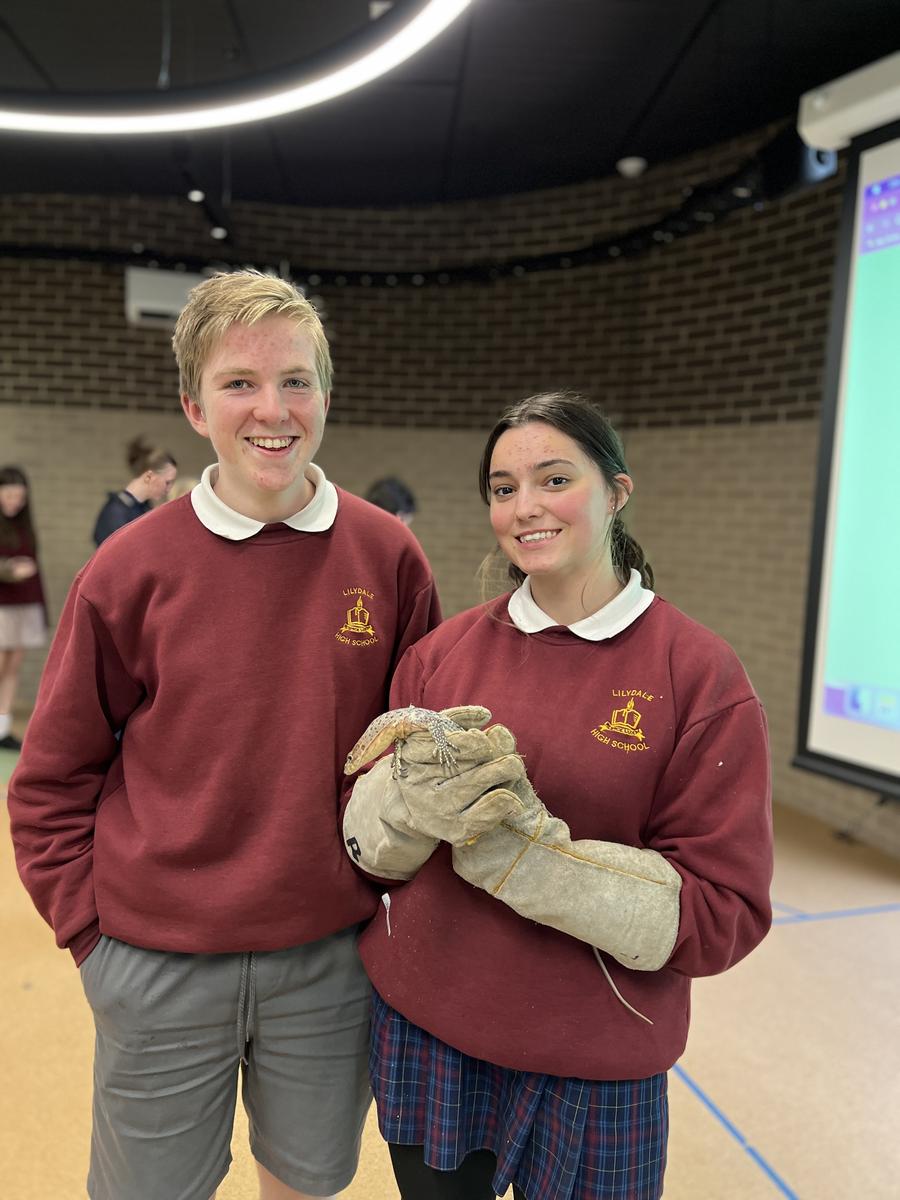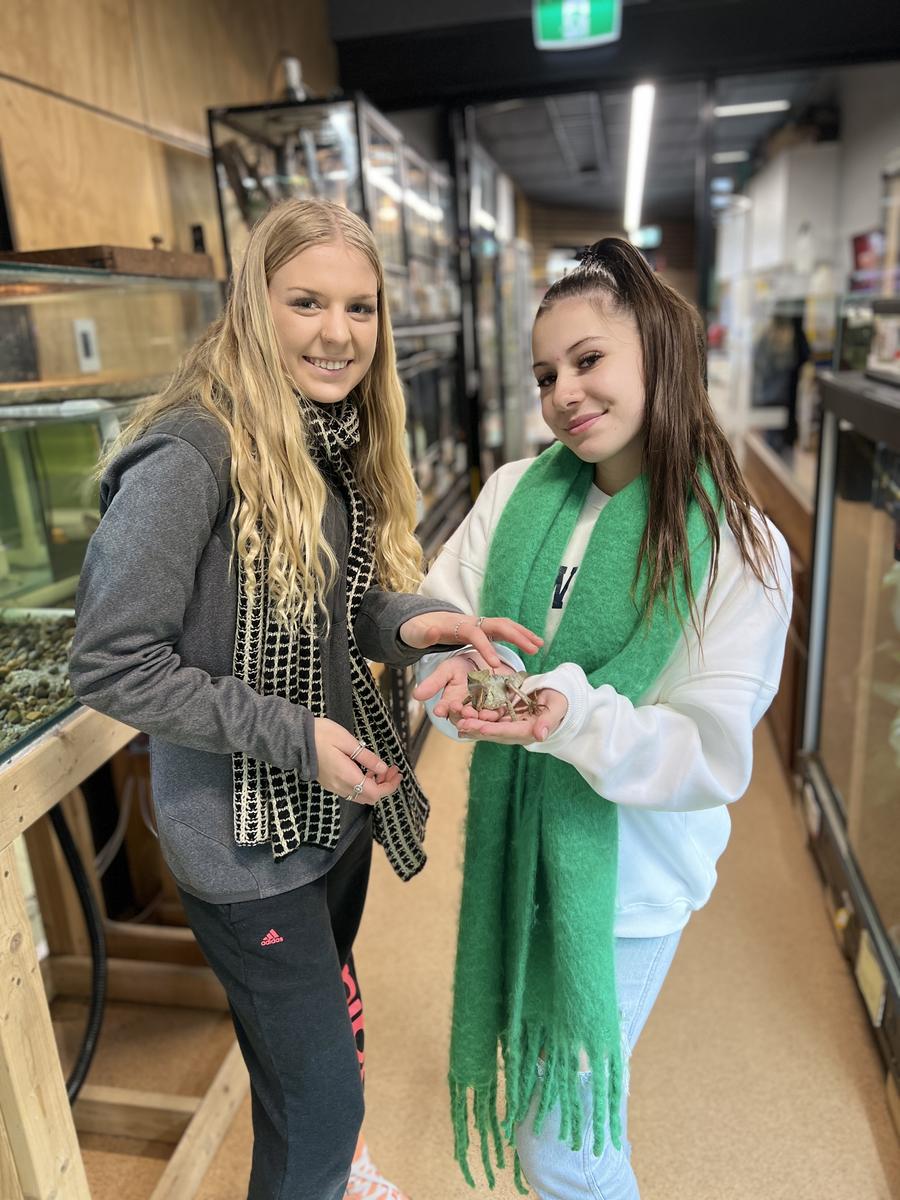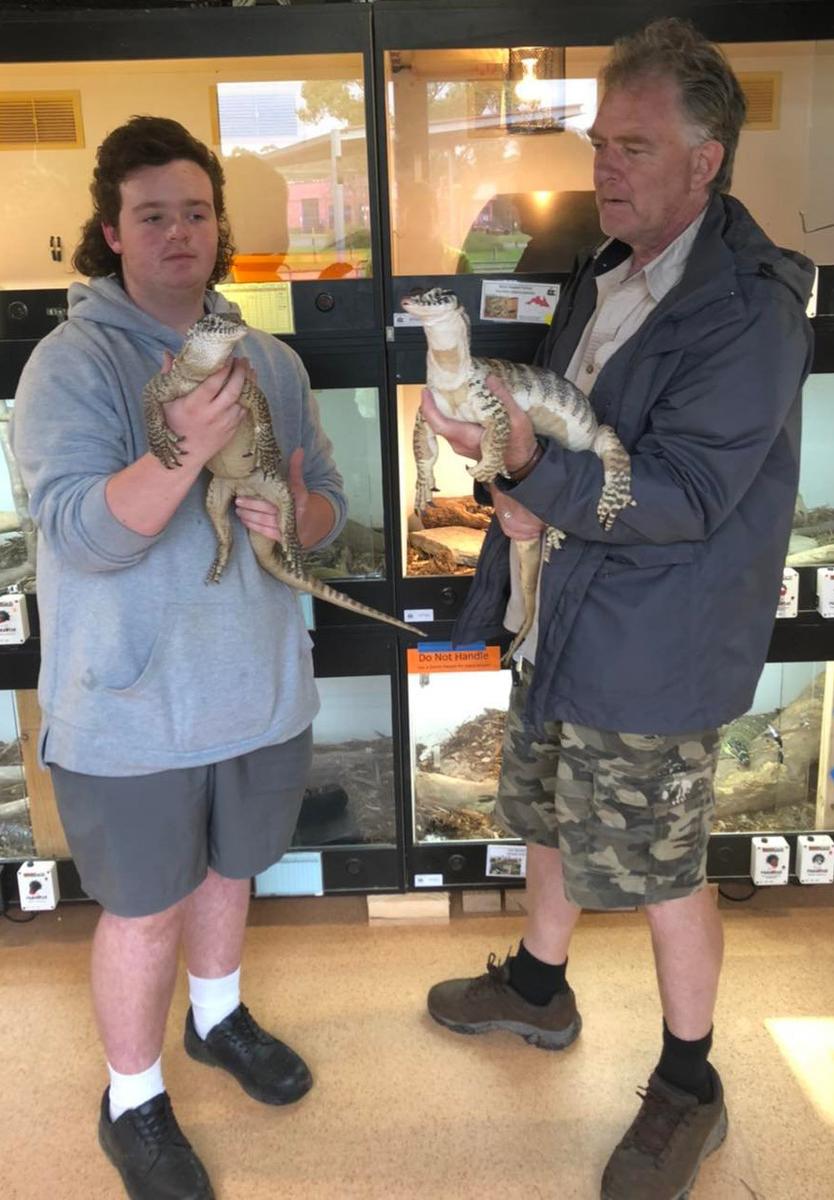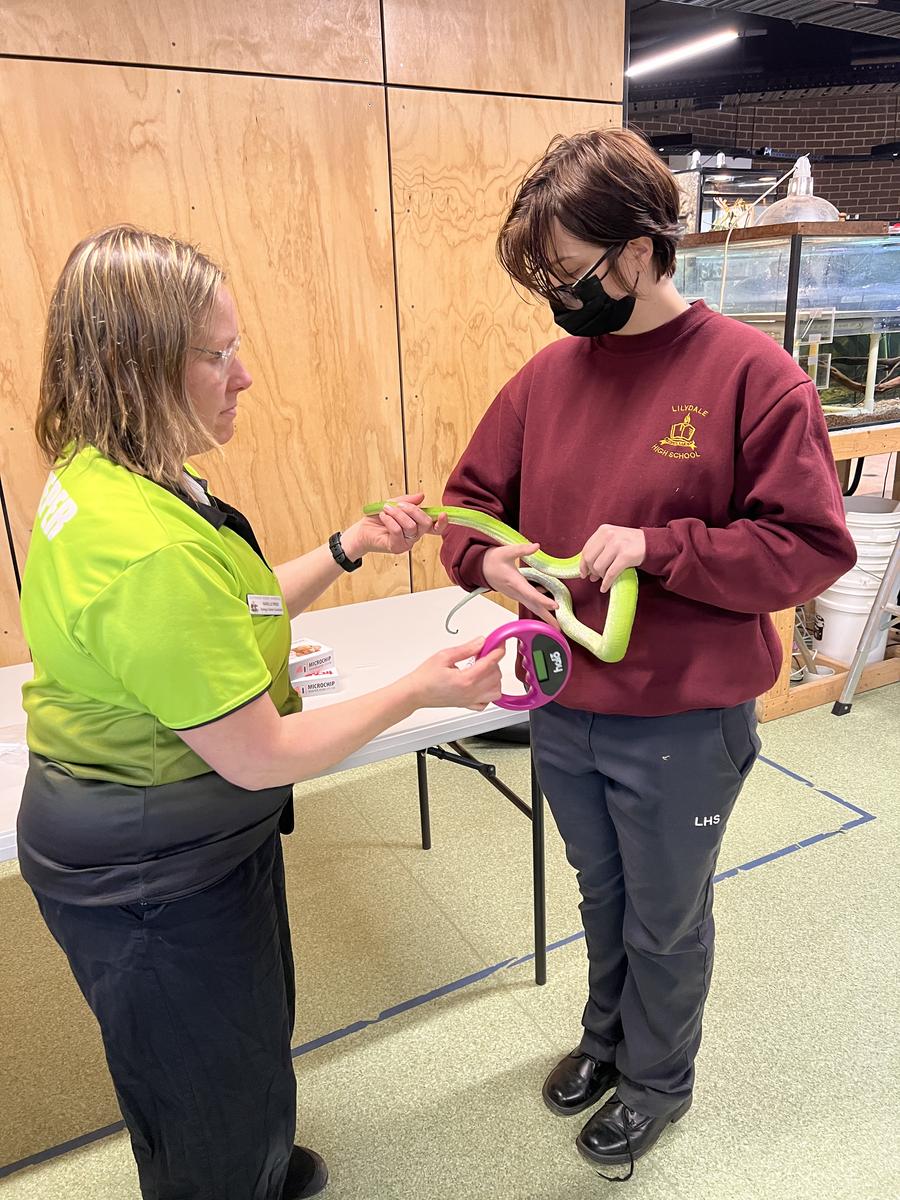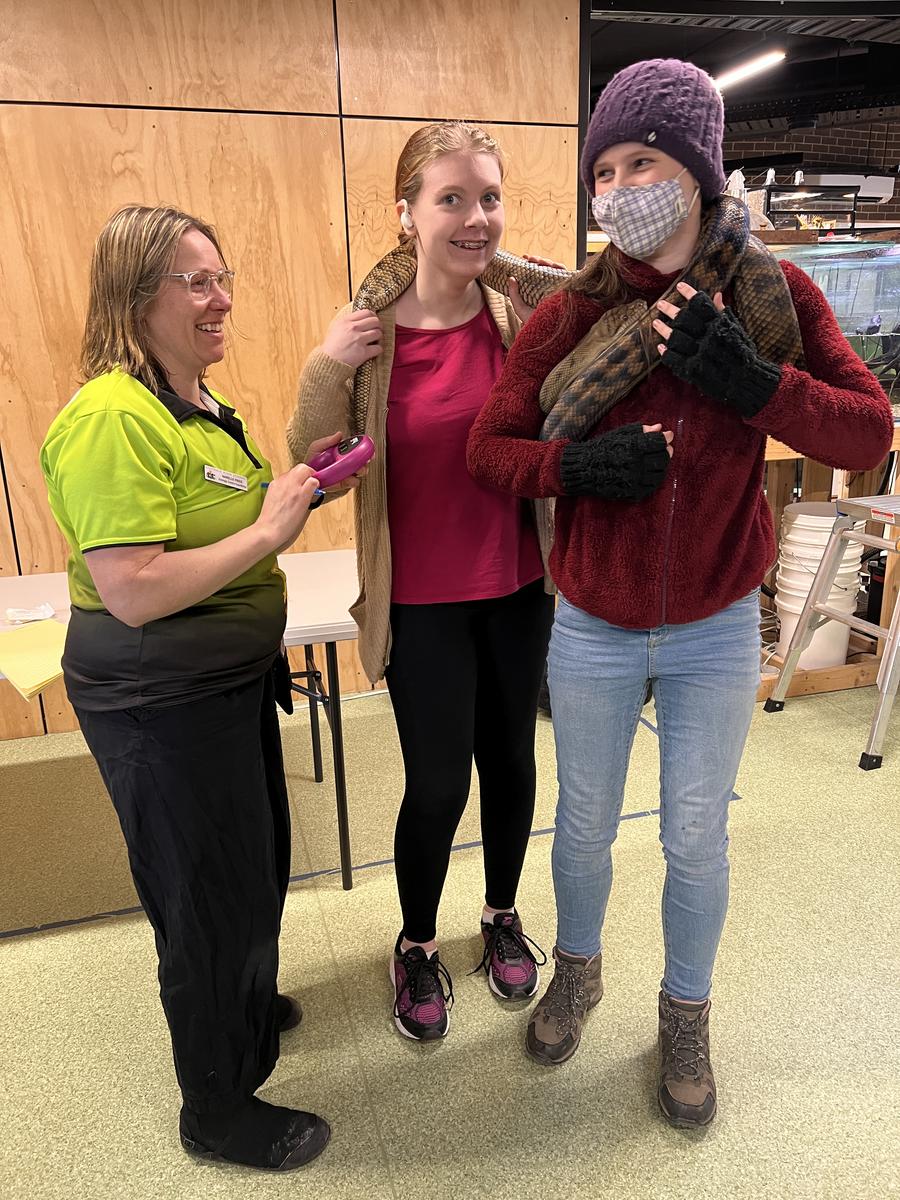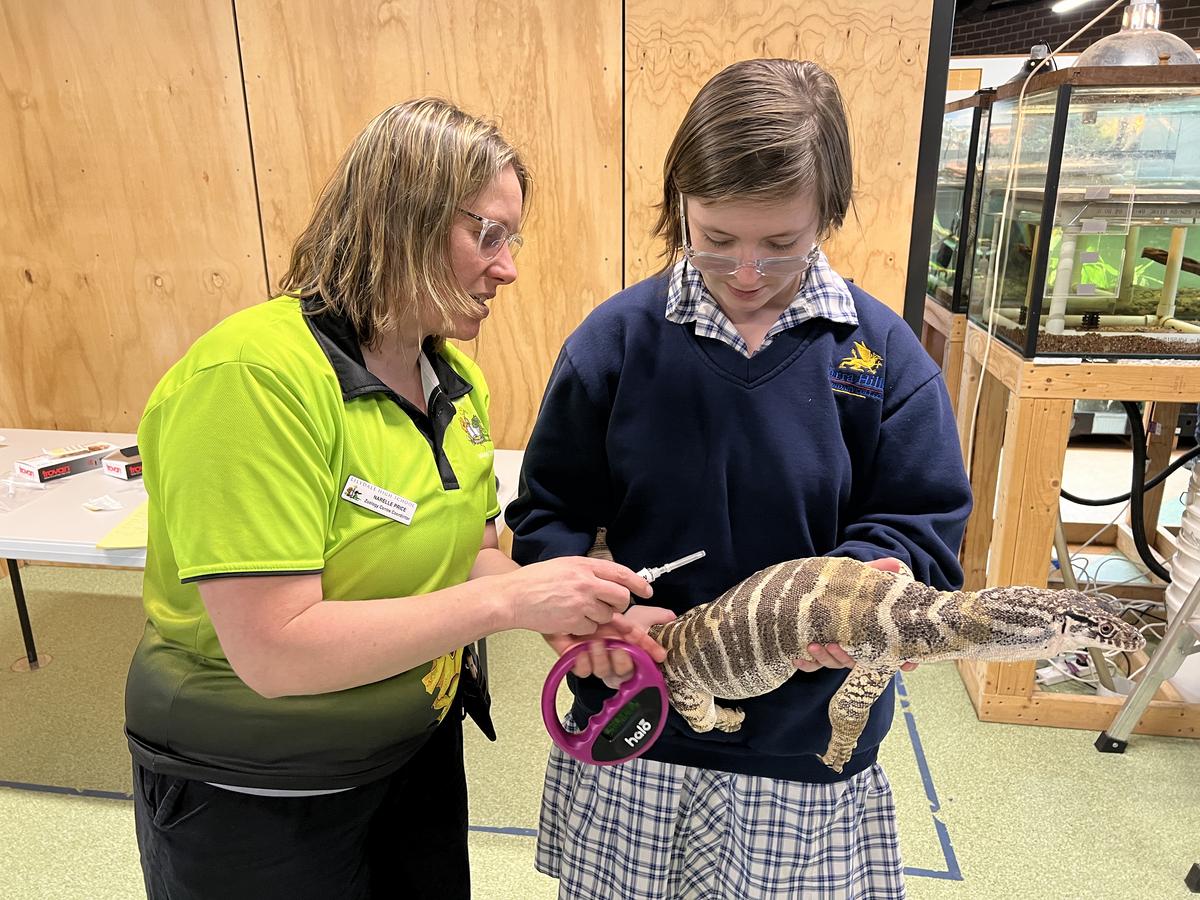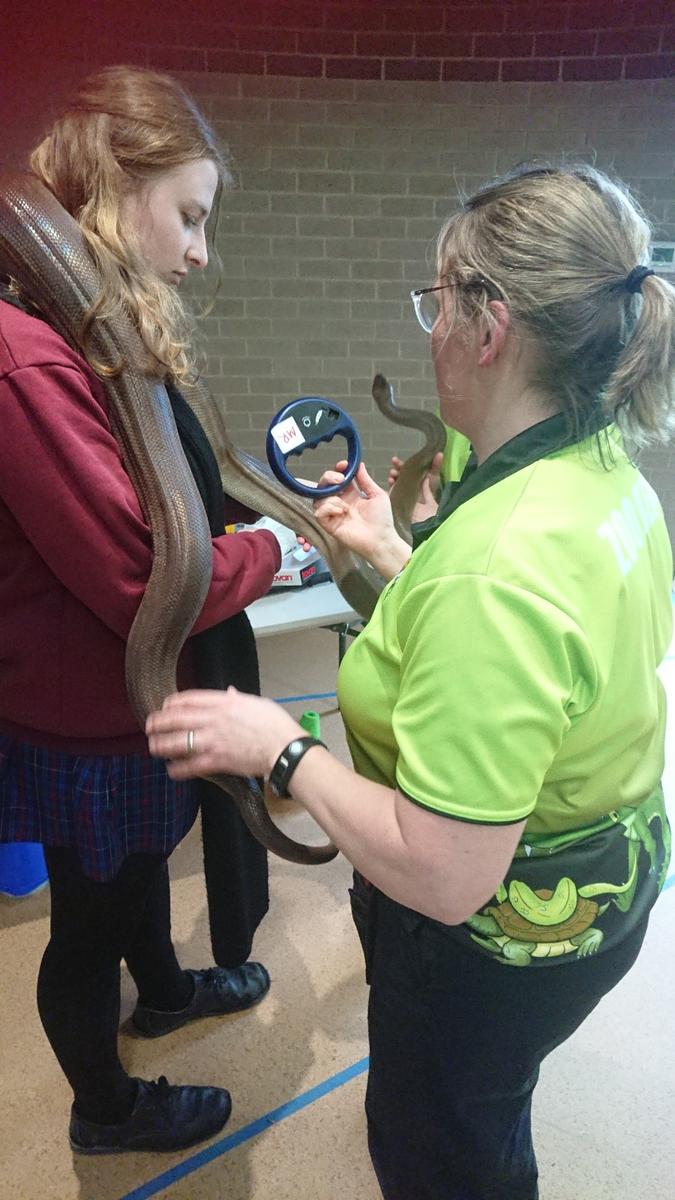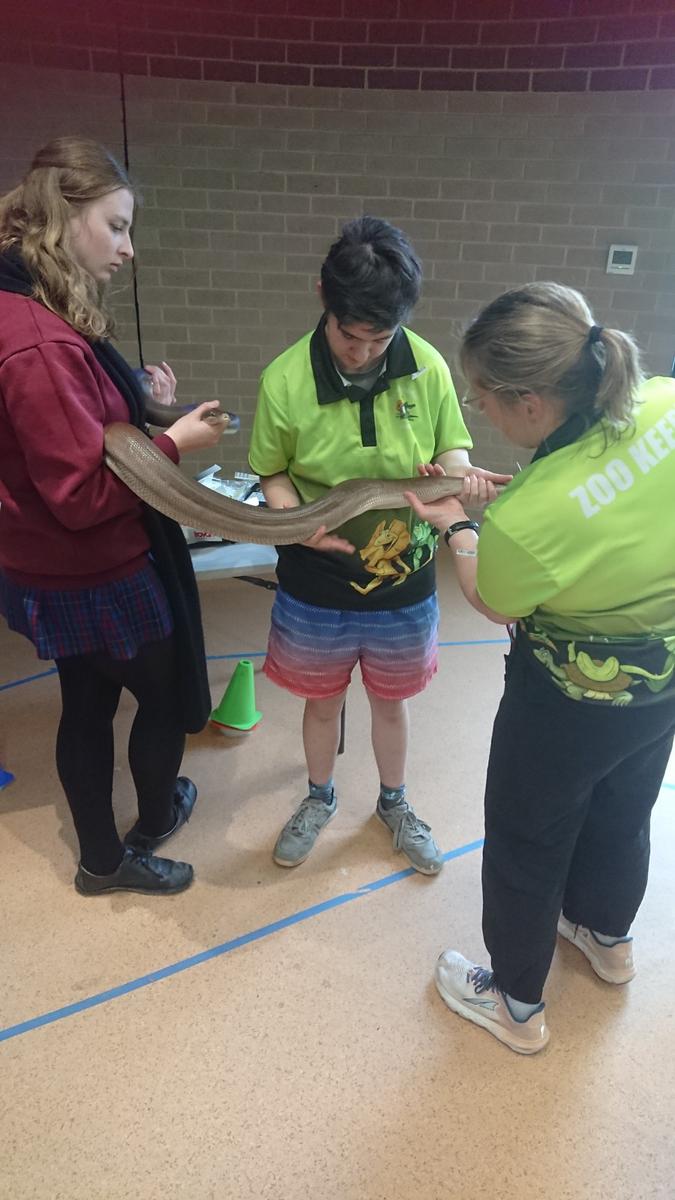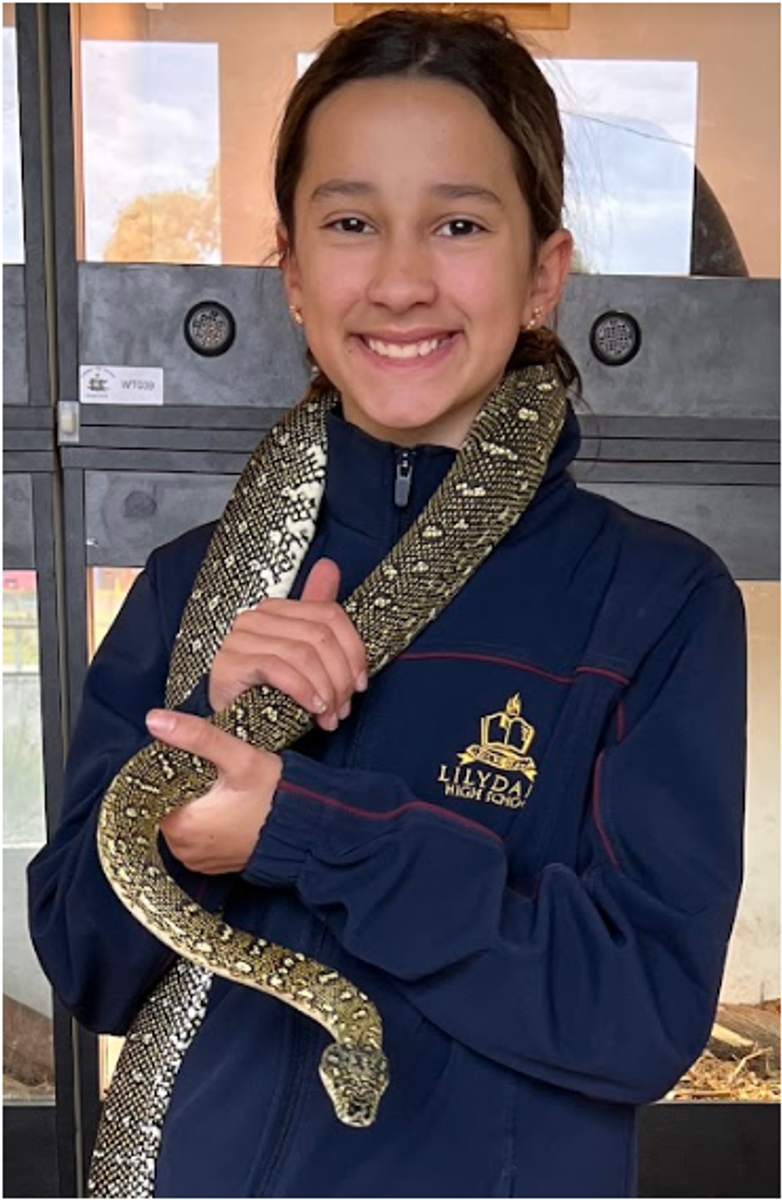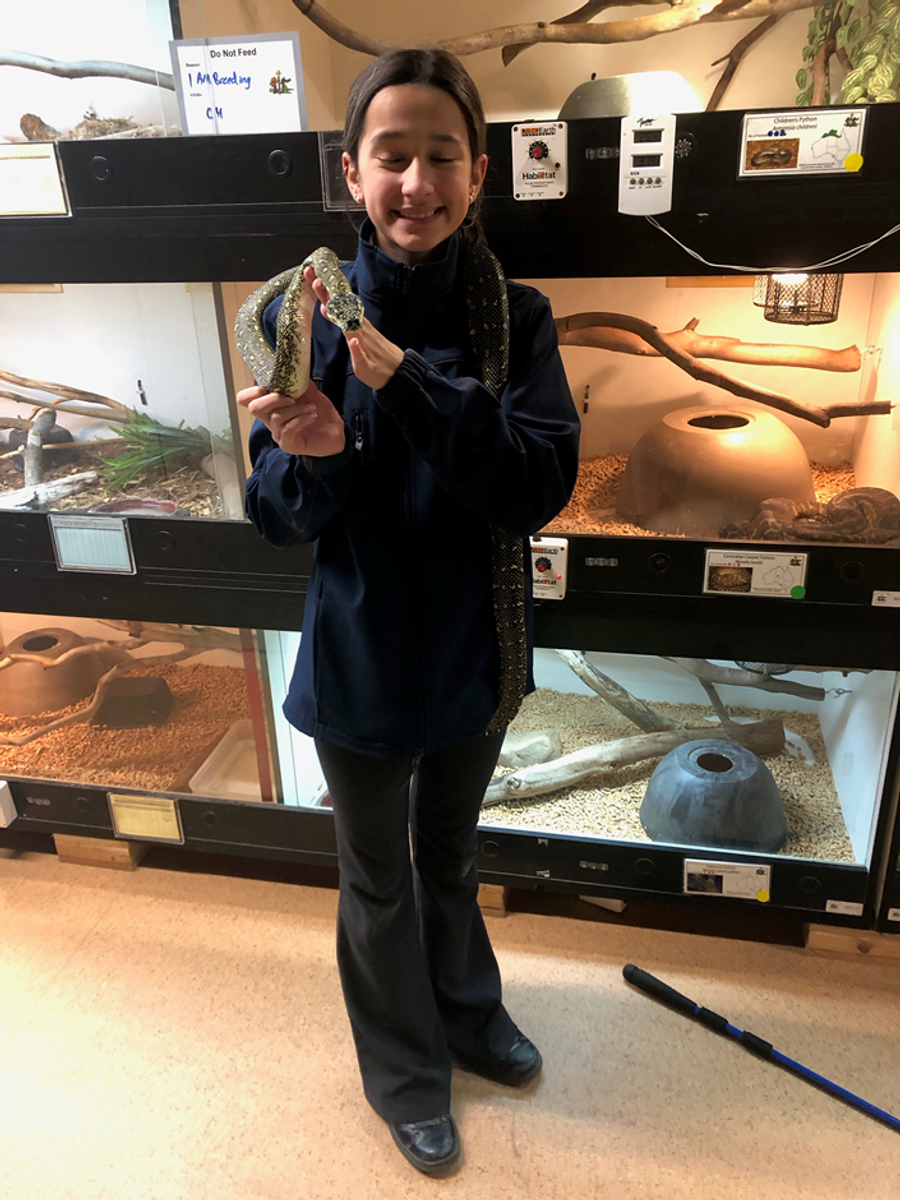ZOOLOGY

What's been happening!
Ministerial visit, Microchips and a NEW CLUB to finish off the TERM!
As we wind things up for the end term operations in the Zoology Centre, we’ve had more visits from local schools including; CIRE Education Centre and Rolling Hills Primary School as well as taking the animals on the road again to Chirnside Park Primary School, as part of our Year 9 Community Time class - Reptile Care and Presentations.
We also had a visit from the Deputy Premier and Minister for Education, James Merlino who spent some time in the Zoology Centre and took the opportunity to speak with some of the students involved in the Zoo Keeper program.
Narelle has been busy microchipping our animals with the assistance of students and some of our guests, as well as coordinating with Unusual Pet Vets and other local vets to investigate a couple of health concerns with some of our animals.
As part of this process, we were fortunate enough to have some of the CT scans of one of our monitors given to us to share with students.
We are now looking at ways we can use such scans to allow students to create 3D printed versions of these scans, that we and the vets can use for future education about reptile health.
The building works for the new enclosures are just about to begin. Our small team of volunteers and students have been instrumental in rearranging the rooms, once again, to allow temporary fencing to be setup and to make space for the incoming enclosures.
Cassie has been busy with her ‘After School Skinks’ club to give students more opportunities to increase their knowledge about the animals and improve their handling skills for animals they don’t often get an opportunity to handle.
The Zoology Centre will be OPEN to students during the holiday period from 10 am – 12 pm, Monday to Friday, for students who would like to check up on their animals and assist in the care and maintenance of the facility.
Microchipping
Last week in the Zoology Center we had an interactive microchipping session with our Animal Studies students. Microchipping dogs and cats is a common procedure for our pets, but you may be surprised to know that it is important for the welfare of our reptile inhabitants at the Zoology Centre.
Microchipping is an important part of accurate identification in our reptiles. It allows us to be certain who is who. This is essential in animal welfare so we can track their weight, provide medical and preventative medicine to the right individuals and keep accurate records.
Dr Narelle and the Animal Studies students assisted by volunteer Clare, microchipped an impressive 50 animals last Wednesday!
A big thank you to Microchips Australia for the contribution of the microchips and other teaching materials.
Keeper Profile
Name: Marley Curnow (Year 7)
Age: 12
How long have you been a keeper in the Zoology Centre / Reptile House?
About 4 months, I started just after the beginning of the school year.
Which animal or animals do you enjoy working with the most and why?
My favourite animal in the Zoology Centre is Artie the Diamond Python. I like him because he’s got personality and attitude.
What has been one of your most memorable moments in the Zoology Centre / Reptile House?
My most memorable moments so far have been going to the opening night and the primary school excursions. I loved hanging out with all of the animals and talking to the kids and their parents about the animals and the Zoology program.
What do you enjoy about being a keeper in the Reptile House?
I love working with all of the different animals. I’m learning about the responsibility involved with taking care of a variety of different species.
What are your aspirations for the future?
I want to become a zoologist when I get older. Ideally, I would like to focus my research on snakes.
What are you looking forward to the most when the Zoology Centre is complete?
I’m looking forward to the animals getting new enclosures, and having more space. I’m also excited for the keepers to have more space when cleaning around the animals when they're in their enclosures.
Why would you recommend getting involved in the Zoo Keeper Program at Lilydale High School?
I recommend getting involved in the zookeeper program because it teaches you responsibility. The work we do in the Zoology Centre shows you if you actually would like to work with animals or not, and what is involved with the animal profession.
Species Highlight!
Diamond Python Morelia spilota spilota
The Diamond Python is a cool climate python, found on the south-eastern coastline of Australia was one of the first reptiles to be reported back to England with the coming of the First fleet to Sydney.
It is a sub-species of the Carpet Python (Morelia spilota). They bask during the day obtaining heat from sun in the early morning and then retreat into hides curling up into a ball to slow heat loss.
Diamond Pythons are often olive to dark and have collections of cream scales in a ‘diamond’ pattern which gives them their name.
These beautiful pythons are found further south then any other python in the world. They have a mainly nocturnal lifestyle and often occur near large populations of humans; they are however masters of concealment as they are not often seen. The Australian Museum describes the benefits of having a Diamond Python in your roof controlling vermin!
Adult Diamond Pythons in the wild feed on small mammals and birds are nocturnal hunters, ambushing their prey. Pythons in their natural habitat consume less food over winter due to lower temperatures and food availability.
Although they do not hibernate in the true sense, they can often not eat for 12 months! Currently in the Zoology Centre our pythons are in winter mode and are not eating.
Diamond Pythons can reach 2.5 to 3 metres in length, weighing in at 4-6kgs with females being larger than males.
They are the only pythons in the carpet python group, where the males do not combat during breeding season. They form breeding aggregations around females with the males moving from one female to the other. Females lay egg clutches which they then protect through incubation which can range from 49-55 days. This maternal care stops once the young hatch.
Narelle Price and Marcus Whitby

